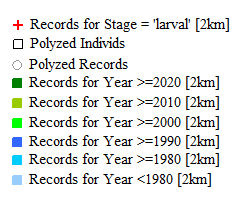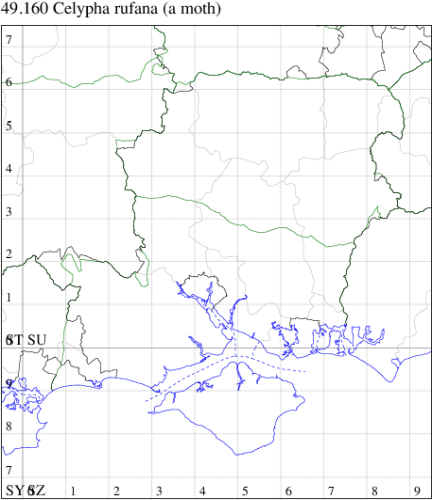Celypha rufana
Checklist Number49.160 [B&F: 1065]
Verification
Record will require further evidence, at least a good photograph, unless CMR is aware recorder has confidence in identification
Classification
| Family: | Tortricidae |
| Subfamily: | Olethreutinae |
| Genus: | Celypha |
| Species: | rufana |
| Authority: | (Scopoli, 1763) |
Rare on rough ground in parts of Wales and north-western England. Taken in Kent in 2017, since when it has increasingly been recorded as a migrant from many counties in southern England and is now probably established as a localised breeding species in some areas. Hampshire's first record was in 2024, when an individual turned up at light in Andover (VC12) and the first for Wight occurred in 2025. Wingspan 15-17 mm. Differs from C. rosaceana by its comparatively broad forewing in which the general coloration is olive-brown or ferruginous-brown compared with the much paler and distinctly pinkish coloration of C. rosaceana; in C. rufana the median fascia of the forewing is never so strongly developed as in C. striana [Bradley]. As published by Heckford and Beaven in the Entomologist's Gazette 63: 217-221 (2012), the larva fed on decaying leaves of Taraxacum officinale agg., except for a short period, and not on the roots of certain Asteraceae species as given in the literature.


The abundance in each month is indicated as follows:
 No records
No records Very occasional
Very occasional Irregular
Irregular Uncommon
Uncommon Off-peak, but not unusual
Off-peak, but not unusual Off-peak, but not unusual
Off-peak, but not unusual Main flight time
Main flight time| J | F | M | A | M | J | J | A | S | O | N | D | |
|---|---|---|---|---|---|---|---|---|---|---|---|---|
| Adult |  |  |  |  |  |  |  |  |  |  |  |  |
| Larval |  |  |  |  |  |  |  |  |  |  |  |  |
Records by week (adult)
Records by week (larval)
VC12 North Hampshire
| Site | Date | Quantity | Recorder | Stage |
|---|---|---|---|---|
| Anna Valley, Andover (SU34) | 27/08/2024 | one | Tim Norriss | Adult |

